Employer Sponsored Retirement Plans
There are several options available for you to make the most of employer sponsored retirement plans. Our list of strategies may help.
Presented by: Kris Maksimovich, AIF®, CRPC®, CPFA®, CRC®
Today, there are basically two types of categories for employer sponsored retirement plans. The first is a defined benefit that offers a specified payment at retirement, such as pension plans. These plans pay a specified amount of money based upon the length of service. The benefit is that this type of plan requires no effort because it is managed by an employer. The chief disadvantage is that a minimum number of years of service are usually required.
The other type of plan is defined contribution, which allows employees and employers to contribute tax-deferred funds as well as invest them, such as a 401(k) or 403(b), employee stock ownership plans (ESOP), profit-sharing plans, and a simplified employee pension plan (SEP). The benefits include having better control over the process and greater portability for employees to transport their funds to another employer’s plan. Contrasted against defined benefit plans, the funds don’t have to perform as well if the costs are manageable. Additionally, there is creditor protection for these plans against judgments, liens, malpractice and lawsuits that protect the assets. The greatest disadvantage is they require discipline and oversight to ensure continual contributions and risk management to help avoid poor investments.
When it comes to paying for retirement, the model people generally follow is similar to a three-legged stool:
- Pension
- Social Security
- 401(k), IRA, or Thrift Savings Plans
Pension plans
Pension plans have been around for a very long time. Even during the revolutionary war, soldiers were offered a type of pension for their service. American Express was the first business in the U.S. to offer a pension plan for its employees. Afterwards, pensions were made available in nearly every industry such as airlines, printing, automobile, and more.
In 1983 there were about 183,000 plans. In stark contrast, there were only 46,000 by 2006. Today, only 13 percent of companies still offer pension plans. Several issues plaguing these plans are behind the dramatic drop. Like Social Security, there is more money being taken out of the plan than being put in. Dropping interest rates, and the liabilities that have come with funding and payment obligations are causing many companies to retire their pensions. Currently, many companies are writing standing options into their plans to allow for the lump-sum payout.
To plot the best course of action, you’ll need to understand your plan’s health, the options available to you, or any limits based upon the time you turned on your pension. All employees should be on the lookout for their company’s Annual Fund Notice which is required to be sent to those part of the company’s pension plan. This notice states the health of the pension program, and how much funding is available. The information can help you determine if you want to leave the pension obligation with your employer or if you want to move the lump sum into a less risky alternative, like rolling it over into your IRA.
If the company managing your pension goes defunct, the Pension Benefit Guarantee Corp (PBGC) is a government-backed organization that covers the liability of any company that declares bankruptcy. You should know, however, that they only pay up to a certain statutory limit.
401(k) plans
What we know today as 401(k) Plans came into existence in the mid-80s when they originally started as a fluke. Benefit consultant Ted Benna, known as the father of the 401(k), was digging into the Employee Retirement Income Savings Act (ERISA) and the 1978 Revenue Act when he discovered section 401(K) which allows for non-qualified deferred compensation.
The discovery was pivotal because it enabled employees to help themselves fund their own retirements on a pre-tax basis. It is generally much easier for people to save for their retirement out of their paycheck prior to receiving it. Equally as important is the option for matching contributions. The ability to take advantage of free money when a company matches a certain percentage of your contribution can dramatically increase your savings.
Similarly, Thrift Savings Plans work like 401(k)s but are reserved for government employees.
Roth accounts
Both a Roth 401(k) and Roth IRA offer tax-free growth on your investment, but they differ in several important ways:
- There are income limitations that may exclude you from receiving a tax deduction when contributing to a Roth IRA. In 2020, a married couple can make up to $206,000 filing jointly and $139,000 for a single filer
- A Roth 401(k) has limitations on the types of penalty-free early withdrawals you can make
- The Roth 401(k) has a higher contribution limit than a Roth IRA. In 2020, Roth 401(k) limits you to a $19,500 annual contribution, or a $26,000 catch-up allowance if you are over age 50. The max for the Roth IRA is $6,000, or a $7,000 catch-up allowance if you are over age 50
- There are no required distributions with a Roth IRA. The distributions with a Roth 401(k) must start at age 72
- Taxation on both the Roth 401(k) and IRA accounts happens at the time of contribution. Money put in is taxed at your ordinary income tax rate, then the market runs its course. Upon retirement, distributions will be tax-free
Where should I begin?
When clients ask, we generally start the conversation by taking advantage of any free money as part of your company’s matching, so you don’t leave any money on the table. 401(k) plans are the first place to begin saving for your retirement. Here are some considerations:
- Does my company offer a 401(k) plan?
- How much can I afford to withhold from my paycheck?
- What’s my company’s matching situation?
Given the size of most companies offering them, the investment expense ratio involved with these plans are as low as any that can be found. That’s because companies have a lot of leverage with their combined total assets versus just an individual trying to save.
Strategies most people don’t know about their employer sponsored retirement plans
Options. Most clients don’t have any understanding of what they can do with their 401(k) plans or the options available to them like Roth and after-tax options to maximize their benefits. There are also an increasing number of Roth options inside many 401(k) plans. Investors should consider a number of things to make the most of their employer sponsored plans:
- Time horizon should always be considered. For example, you don’t want to get stuck in a 40 percent drawdown when you are two years from retirement
- Go with low cost savings options
- Stay invested
- Manage the expenses
- Stay consistent with your contributions
- Dollar-cost averaging means ensuring there is an appropriate balance between stocks and bonds
Costs. Keep an eye on the cost of your retirement plans. Your 401(k) plan has administrative fees involved with them. These are charges you should be aware of that go against the performance of the investments within your 401(k).
Distributions. It is possible to roll the money over from a Roth 401(k) to a Roth IRA to avoid having to take the required distributions at age 72, with some specific guidelines. Check with your trusted advisor for details specific to your circumstances.
Business Owners. If you’re a sole practitioner or business owner, you can setup a 401(k) also known as a Solo(k) or Indie(k). Like employer sponsored plans, you have the option of contributing on a pre-tax basis and when you retire, your money becomes taxable.
You can contribute more than the max. For people under age 50 the max for 2020 is $19,500, however there is a forgotten contribution feature when it comes to after tax accounts. The IRS states the total fund contribution maximum is $57,000 if you are under 50 or $63,500 if over the age of 50. This means that you can add additional funds after tax up to that amount using match, profit sharing, stock purchase, and contributions.
This strategy offers protection against some of the surtaxes as a result of the Affordable Care Act, namely the net investment income tax of 3.8 percent for those with adjusted gross income over $250,000. By making contributions to these you can save more for retirement, shelter it in a vehicle that is creditor protected, has all of the deferral components, and offers a lot more flexibility with as to when you pull the assets out. Your financial advisor can help you work through the specifics to take advantage of the best option for you.
Tax deduction. If you think a tax deduction will help you, or if you are under the threshold where you can contribute to an IRA, a pretax account might be worthwhile for you. For example, to keep your adjusted gross income under a certain amount, the pretax option may accomplish this.
If you have ultra-high net worth, or income earnings, the appeal of Roth’s tax-free distribution may be more appealing. You’ll have to decide if it will help your tax return this year, or if tax free assets are better off down the line.
Target date funds. Target date funds manage an allocation of equity and fixed income as a guide path to your targeted retirement. A Target Date Fund is designed to manage your assets more conservatively as you approach your retirement age trigger. This is desirable in managing performance that might be affected by a potential market drawdown as you near to your retirement age. It’s imperative that investors understand how these plans work. Speak with your financial advisor to help you select options that are suitable for your level of risk tolerance.
Trends for employer sponsored plans
One concept taking form in many industries is financial wellness in the workplace. Like healthy options promoted by insurance companies, some employers are offering financial health options. These consist of educational material and resources to help people understand financial concepts and options. Check with your plan administrator to see if they offer financial wellness.
For deeper insight, you can listen in to the Your Money Momentum podcast on Employer Sponsored Retirement Plans.
Investments in target date or target retirement funds are subject to the risks of their underlying holdings. The year in the fund name refers to the approximate year (the target date) when an investor in the fund would retire and leave the workforce. The fund will gradually shift its emphasis from more aggressive investments to more conservative investments based on its respective target date. The performance of an investment in a target date or target retirement fund is not guaranteed at any time, including on or after the target date, and investors may incur a loss. Target date and target retirement funds are based on an estimated retirement age of approximately 65. Investors who choose to retire earlier or later than the target date may wish to consider a fund with an asset allocation more appropriate to their time horizon and risk tolerance.
Learn more about managing workplace retirement plans.
Kris Maksimovich is a financial advisor located at Global Wealth Advisors 4400 State Hwy 121, Ste. 200, Lewisville, TX 75056. He offers securities and advisory services as an Investment Adviser Representative of Commonwealth Financial Network®, Member FINRA/SIPC, a Registered Investment Adviser. Financial planning services offered through Global Wealth Advisors are separate and unrelated to Commonwealth. He can be reached at (972) 930-1238 or at info@gwadvisors.net.
© 2025 Commonwealth Financial Network®
Latest News
How much does college really cost?
April 2, 2025
How Much Does Your Bracket Pick Really Cost? We hope you're just as excited as we were for this year’s March Madness Tournament and finally getting down to F...
READ MORE...Big News for Retirees: Social Security Fairness Act Repeals WEP and GPO
March 27, 2025
If you or your spouse have worked in both the public and private sectors—or if you’re currently drawing a government pension—there’s important news that...
READ MORE...Managing Taxes on Your Investments
February 19, 2025
Presented by Scott Portlock CFP®, CLU® When it comes to your money, it’s not what you earn, it’s what you keep. Here are some ideas that may help le...
READ MORE...Loading...






